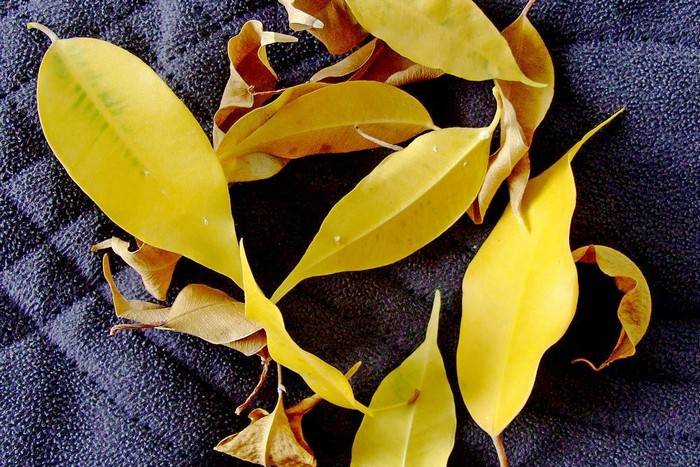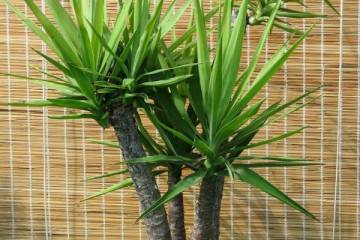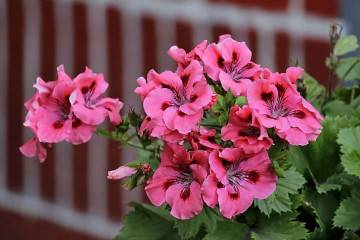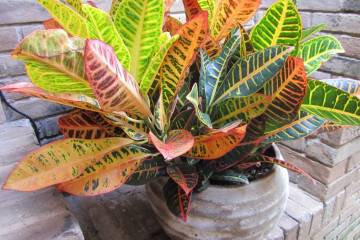Ficus Benjamin - leaves turn yellow and fall, what to do
Content:
If Benjamin's ficus turns yellow and leaves fall, few know what to do. This is the main question with which the growers are puzzled who have this beautiful, decorative leafy flower at home. And there is a plant in almost every home and in many offices, cafes, shopping centers. Its external qualities are excellent, expressive, laconic plant fits into every interior. However, the flower will need careful care, which will ensure its full growth and development. The most popular problem - yellowing and falling leaves - is described in detail below.
Ficus Benjamin: leaves turn yellow and fall, what to do
To fix the problem of yellowed leaves, you need to find the cause of this phenomenon. Below are several options for why the leaves of the ficus turn yellow and fall:
- improper watering. This is the most common mistake of flower growers, due to which the leaves can turn yellow and fall off. For each specific plant, you need to calculate the water rate it needs. This will depend on the age, size, variety and growing conditions of the Ficus Benjamina. Excessive watering threatens that the plant will get sick, and its roots will begin to rot. Lack of liquid is dangerous because the ficus will try to retain moisture in the roots and stem and shed the leaves as not the most important element. After 5-6 waterings, the flower will recover, but the new crown will not turn green on it soon. To determine the correct watering time, you need to assess soil moisture. She needs to be allowed to dry up to 1.5 cm in young plants and up to 3 cm in adults. The water should be soft, at room temperature;
- non-observance of the temperature regime. This problem can be easily avoided, since the flower feels great at a standard room temperature of 20-25 ° C. If the temperature goes over the lower limit, hypothermia of the roots occurs, as a result, the leaves begin to dry, turn yellow and fall off. If there is a strong drop in temperature, the tree will die;
- too low humidity. Ficus Benjamin, along with broadleaf ficus, does not tolerate dry air. To resolve this issue, you can simply spray the flower from a distant distance. If there will be a humidifier in the apartment near the flower pots, this is ideal;
- non-compliance with the rules for transplanting ficus. The transplant should be done once every 2 years. During this time, the root system completely encircles the earthy ball, and the plant needs a larger container in which it will continue to develop. The transplant should be carried out by the transshipment method, while the roots should not be damaged;
- depletion of the soil. This problem occurs if the transplant has not been performed for a long time. To prevent this from happening, the plant must be fed with special fertilizers. It is also recommended to add fresh nutrient soil to the ficus pot. These simple guidelines can help you manage your vitamin and mineral deficiencies.
Diseases
But not always the answer to the question of why Benjamin's ficus leaves turn yellow, and what to do with it, lies on the surface.Sometimes the problems are more serious than mistakes in plant care. This flower can suffer from a number of fungal and viral diseases, despite its relatively high immunity. Hybrid varieties of ficus Benjamin (for example, Natasha) are especially susceptible to disease. The main diseases inherent in the plant:
- anthracnose;
- cercosporosis.
They appear as spots on the leaves, which dry, turn yellow and fall off as the problem develops. They need to be treated with fungicides. Removal of the affected parts will also be required.
Pests
Insect parasites can harm Benjamin's ficus. They are able to destroy it completely, if measures are not taken in time. The most dangerous parasites:
- shield. This insect can cause the flower to shed its leaves overnight. The female scale insect sits statically on the flower. She covers the laid eggs with her body and secretes a special sticky secret that provokes the appearance of a fungus. It is easy to remove the scabbard from the leaves, but it is better to do it mechanically, since some insecticides are powerless against its durable shell, with their help it will not be possible to completely destroy the parasite. It is imperative to remove the topsoil. You will have to repeat the procedures until the problem is completely resolved;
- spider mite. These small insects, no more than 1 mm in length, adore dry and warm weather. Outwardly, you can identify them by a cobweb bloom, which will grow. They multiply quickly and suck out all the juices from the ficus. As a result, the leaves will turn yellow, dry out and fall off. Spots of yellow and white color on the leaves are considered a sign of the appearance of ticks. If a similar problem is found on his ficus Benjamin, it should be treated with special preparations;
- thrips cause huge damage to the plant, after their appearance it cannot recover for a long time. They cause deformation not only of the leaves, but of the entire flower, including the stem. For the fight, special means are used, the processing of which must be carried out several times.
Soil moisture
Soil moisture is the most important criterion for growing a healthy ficus of any kind, both Benjamin and broadleaf, and rubbery, and any other. The most important thing is to keep the soil in a stable state, do not overmoisten and do not let it dry out. If the moisture level of the substrate is constantly at the same required level, the ficus will feel great.
Air temperature
The air temperature should be the same all year round, these are standard room conditions. Ficus Benjamin does not require any changes during the winter. He does not tolerate cold, heat, as well as sudden changes in temperature.
Decay of roots
Root decay (gray rot) occurs when moisture stagnates in the pot. If the problem is not resolved in a timely manner, then the flower will not only say goodbye to the yellowed leaves, but will also die completely. The problem lies in the waterlogged root system. To save the ficus, removing the bush from the flowerpot, inspection and cleaning of the roots will help. If the roots look like thin, slippery gray threads, then this is the problem. It will be possible to reanimate the ficus if transplanted into a new substrate, remove all damaged parts of the root. When transplanting, you will need to dip the entire root system in a potassium permanganate solution for about half an hour, and treat the cuts with crushed charcoal or another disinfectant solution. The new soil must be dry.
Other possible problems
It so happens that there are no noticeable reasons, and the ficus still sheds its leaves, what to do in this case? Soil alkalization probably occurred. It is also associated with improper watering. If water does not come out of the drainage holes during irrigation, it means that the watering is insufficient, and the remnants of salts settle in the substrate. If the flower is watered with plain tap water, alkalization occurs even faster. To revive the ficus and prevent such a problem, watering only with soft, settled water in two steps will help: first, water the flower a little, and after 30-40 minutes. water again, but more intensely.
To prevent the flower from shedding its leaves, it is necessary to eliminate the cause of this, but find it even earlier. Most often, the problem appears on the surface, you just need to build the correct care regimen for Benjamin's ficus. It is important to pay attention to this beautiful flower, in return it will give it its healthy appearance, which will remain throughout the year. Any interior in which Benjamin's ficus will be located will be transformed and sparkle with new colors.



















